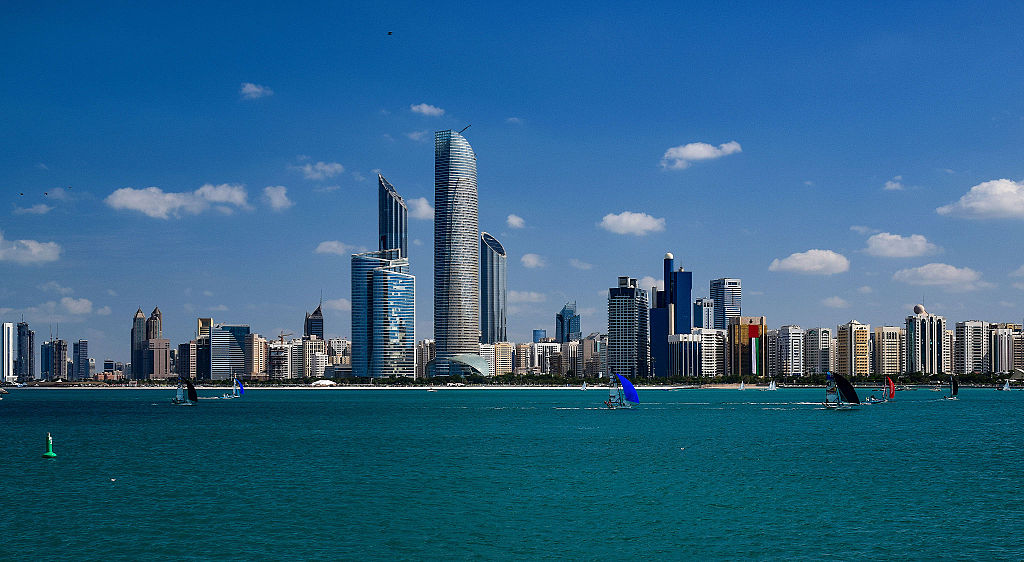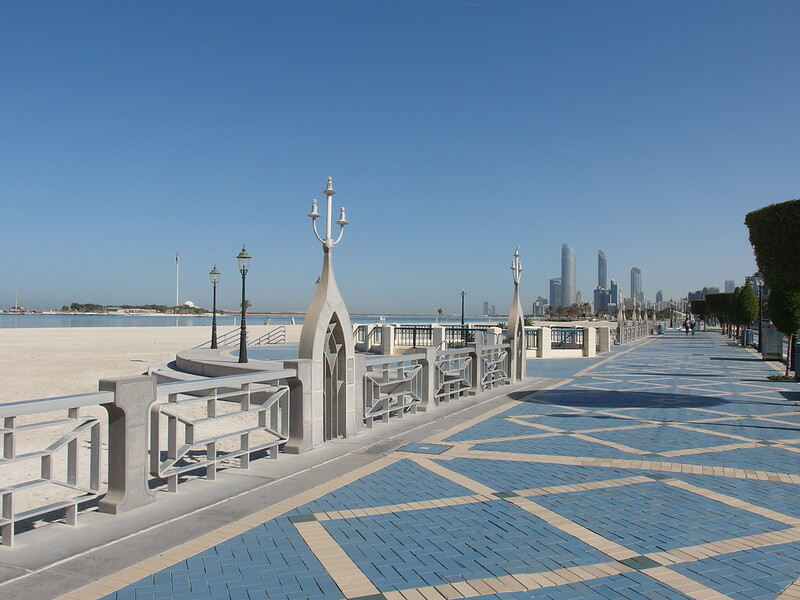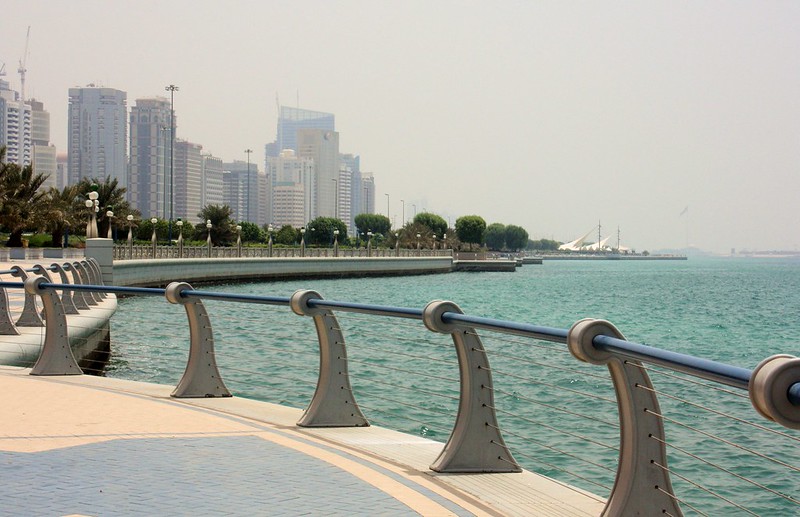Besides being the capital of the UAE, Abu Dhabi also carries a reputation for being home to world-class cultural opportunities.
Unlike its glitzier neighbour Dubai, this so-called “Manhattan of the Middle East” also offers more family-friendly attractions, including nature parks, marinas, theme parks, and beaches.
If you were to head to the city for a last-minute weekend break or stopover, you’d need to have a good idea of what you can do and which places to visit in Abu Dhabi. Even with the little time you have to plan for it, your visit can still be as memorable as any painstakingly organised trip to the UAE capital with this helpful guide for 48 hours in Abu Dhabi.
Abu Dhabi 101: Fast Facts for Travellers
To make smart choices when booking anything for your trip, it pays to know some important facts about Abu Dhabi that travellers find most helpful, such as:
When is the best time to visit Abu Dhabi?
Wherever you go on a trip, one thing you need to know is the best time to go where you’re headed. Abu Dhabi is no exception.
Although you cannot control this for last-minute trips, you can use the information to determine which places you can enjoy most and, thus, prioritise during your trip (i.e., indoor destinations during warm months, outdoor adventures for cooler months):
- December to March: This period is the ideal time to visit the city. It is considered winter time in the UAE. However, this is also the peak period for hotels and airplane flights, which translates to higher travel rates.
- April to November: Abu Dhabi weather during this period is on the warmer side, which is why it is also the time when the city is less crowded, and airfare and hotel room rates are most affordable.
How far is the airport from the top Abu Dhabi spots?
If you’re travelling from another country, it also helps to know the airport’s proximity to the best destinations in the UAE capital.
If your plane is set to land at the Abu Dhabi International Airport, below is a list of places you can visit and how long it’ll take to get there:
- To Sheikh Zayed Grand Mosque – 16 minutes by car
- To Yas Island – 14 to 20 minutes by car
- To Saadiyat Beach – 29 to 33 minutes by car
- To the Corniche Beach – 29 to 30 minutes by car
Take note that some of the shorter roads may have toll gates you’ll have to go through. You can also ride the public transport for most destinations, with trips going every 30 minutes.
What is Abu Dhabi known for?

Discover why Abu Dhabi is hailed as the Manhattan of the Middle East
Popular attractions in Abu Dhabi make the news quite often. In fact, some are even recognised worldwide as record-holders, including Warner Bros. World Abu Dhabi (largest indoor theme park) and Ferrari World Abu Dhabi (home to the world’s fastest rollercoaster and the one with the tallest loop) in Yas Island.
Are there any hotels accommodating last-minute bookings in Abu Dhabi?
The short answer: “Yes.”
Since you’re staying for 48 hours, you’ll need to find somewhere to stay for two nights. Check last-minute hotels via travel websites and platforms to see which hotels have available rooms on the day of your trip.
Take note of the location and amenities and get as much from your hotel booking as possible. Some even offer theme park entrances built into their travel packages.
Top 4 Places to Visit in 48 Hours in Abu Dhabi
Now that you have some knowledge of Abu Dhabi, the next thing you need to decide is where you should spend your limited time there. Though there are lots of choices, you can start with the following famous spots:
1. Ferrari World Abu Dhabi

Ride the fastest roller coaster in the world at Ferrari World Abu Dhabi
Did you know you can squeeze in a couple of bucket-list-worthy activities on your weekend trip to Abu Dhabi?
Head over to Yas Island and satisfy your need for speed. Ferrari World Abu Dhabi is a destination designed to pump up your heart rate with 20 exhilarating rides.
Here, you can ride Formula Rossa — the world’s fastest rollercoaster — and Flying Aces, the attraction with the highest roller coaster loop globally. You also have the chance to get an authentic Ferrari experience, complete with acrobatic shows and genuine Italian cuisines.
Ferrari World Abu Dhabi is usually open every day, though this is subject to change. Check their official website before you go to get up-to-date information.
2. The Corniche

Relax on the beach and take in the Abu Dhabi skyline while visiting The Corniche
One of the most popular layover destinations if you only have 48 hours in Abu Dhabi, the Corniche is the perfect place to spend a relaxing weekend.
Tourists flock to this part of the city to witness the gorgeous Abu Dhabi skyline and relax on the beach. This spot is also ideal for families traveling with kids and is best enjoyed in the afternoon, just before sunset.
Food-wise, Corniche Street has a couple of top-rated restaurants to choose from, including Quest and Li Beirut that offer Asian and Lebanese cuisine, respectively.
3. Sheikh Zayed Grand Mosque

Visit the largest mosque in the United Arab Emirates while spending 48 hours in Abu Dhabi
Your trip to Abu Dhabi won’t be complete without a visit to the Sheikh Zayed Grand Mosque.
Hailed as the largest mosque in the UAE, the mosque offers state-of-the-art architecture made with marble and accentuated with gold and other precious gems. The place reflects the country’s Islamic culture and the wealth of minerals the nation is known for.
Visit times are set between 9 a.m. and 10 p.m. from Saturday to Thursday. You’ll have to head there a bit later on Fridays (4:30 to 11 p.m.), as mornings are set aside for worshippers.
But before you go, make sure you choose your attire according to the mosque’s dress code. If you’re not sure what to wear, you can check the Mosque Manners on the Grand Mosque’s official website.
4. Qasr Al Hosn

The free historical exhibition at Qasr Al Hosn explains how Abu Dhabi came to be
Seen as the symbolic birthplace of the city, the Qasr Al Hosn is the oldest stone building in Abu Dhabi.
It is the first permanent structure ever built in the UAE capital and holds the story of how Abu Dhabi and its people came to be. The free historical exhibition will show you the most significant monuments of the city and some intriguing testimonies about Abu Dhabi’s traditions, culture, and history.
Though the exhibit is permanent, you might want to consider timing your visit during the Qasr Al Hosn Festival. If your trip happens to be in February, expect to be part of the annual festival and partake in a range of fun cultural activities and enchanting performances you will never forget.
48 Hours in Abu Dhabi – Full of Wonder at the Last Minute
A last-minute trip to Abu Dhabi can be as enchanting as visits planned ahead of time. Even with just 48 hours in Abu Dhabi, this guide can help you optimise the experience so you can have a wonderful time in the UAE capital.



